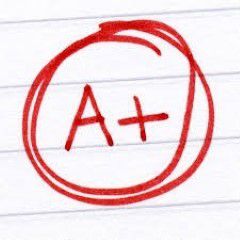MATH324 Assignment 1 Complete Solution
Statistics MATH 324
McGill University, Fall Term 2015
Q1 (a) Show that the mean and variance of a Poisson random variable X with parameter > 0 satisfy E(X) = var(X) = . Hint: Calculate EfX(1 X)g.
(b) Compute the mean and the variance of a Gamma random variable X with parameters ; > 0. Hint: Recall the definition of the Gamma function and that for any > 0, ( + 1) = ( ).
(c) Calculate the moment generating function M of the Geometric distribution with parameter p 2 (0; 1). For which t 2 R does M(t) exist? Use M to compute the mean and variance of the Geometric distribution.
Q2 Which distribution would be a suitable model for the random phenomenon described below? Justify your choice. Identify which parameters are unknown and which are given from the context.
(a) Number of cases of E.coli infections in the state of Colorado in a given year.
(b) Number of fish, out of 20, who survive 24 hours in a water tank filled with contaminated water.
(c) Total number of bags filled with coffee beans that need to be examined until 10 bags with spoiled beans are found.
(d) The actual measured resistance of a wire manufactured for use in a computer system.
(e) Size of an insurance claim due to a car accident.
(f) Relative humidity measured at a specific location.
Q3 A bottling machine can be regulated so that it discharges an average of ounces per bottle. It has been observed that the amount of fill dispensed by the machine is normally distributed with = 2:0 ounces.
(a) If n = 9 bottles are randomly selected from the output of the machine, what is the probability that the sample mean differs from the true mean by at most 0.3 ounces?
(b) Find the probability that the sample mean differs from the true mean by at most 0.3 ounces using sample sizes n = 25, n = 36 and n = 64. What pattern do you observe among the values of this probability that you computed for the various sample sizes? Can you provide an explanation for your finding?
(c) How does the probability obtained in part (a) change when is unknown, and the sample variance equals S2n = 5:3?
Q4 A forester studying the effects of fertilization on certain pine trees is interested in estimating the average basal area of pine trees.
(a) From many years of experience, he finds that the measurements of basal areas are approximately normally distributed with standard deviation of about 4 square inches. Suppose the forester would like the sample mean basal area to be within1 square inch of the population mean, with probability 0:90. How many trees must he measure in order to ensure this degree of accuracy?
(b) Suppose you are not convinced about the accuracy of the forester’s guess of the
population standard deviation and prefer to regard this quantity as unknown. If
a random sample of n = 9 basal areas is to be measured, find two statistics g1
and g2 such that
Pr(g1 ( X
n ) g2) = 0:90:
Q5 Let S2n
denote the sample variance for a random sample of n = 10 ln(LC50) values for
copper and let S2m
denote the sample variance for a random sample of m = 8 ln(LC50)
values for lead, both samples using the same species of fish. The population variance
for measurements on copper is assumed to be twice the corresponding population
variance for measurements of lead. Assume S2n
to be independent of S2m
.
(a) Using an appropriate statistical table, find numbers a and b such that
Pr
S2n
S2m
b
= 0:95; Pr
S2n
S2m
a
= 0:95:
Hint: Notice that Pr(U1=U2 k) = Pr(U2=U1 1=k).
(b) If a and b are as in part (a), calculate
Pr
a
S2n
S2m
b
:
Q6 In questions Q3 and Q4, the discharges per bottle and the basal area measurements
were assumed to be normally distributed. Suppose now this assumption is dropped.
(a) Revisit questions Q3 (a) and (b) and Q4 (a). Do your previous calculations still
make sense? Justify your answers and interpret the results (i.e., are they exact
or approximate, how good you think the approximation is)?
(b) Redo questions Q3 (c) and Q4 (b), assuming the probabilities to be calculated
are only approximate. Compare your findings with your answers to Q3 (c) and
Q4 (b).
Johanna G. Nešlehová
Statistics MATH 324
McGill University, Fall Term 2015
Assignment 1: Due October 1 at 11:59 PM
Q7 (optional) Suppose that X1; : : : ;Xn is a random sample from some distribution F such that
E(X1)4 < 1. Using the Weak Law of Large Numbers, prove that the sample variance
converges in probability as n ! 1 to the true variance of the underlying distribution.
You can use, without proof, the following two results about convergence in probability:
(1) Suppose that Y1; Y2; : : : and Z1;Z2; : : : are sequences of random variables such
that Yn
P!
a and Zn
P!
b as n ! 1 for some a; b 2 R. Then
Xn + Yn
P!
a + b and XnYn
P!
ab as n ! 1:
(2) Suppose that Y1; Y2; : : : is a sequence of random variables such that Yn
P!
a as
n ! 1 for some a 2 R. Let further g be an arbitrary continuous function. Then
g(Yn) P!
g(a) as n ! 1:
Q8 (optional) The following R function returns the sample variances of N samples of size n drawn
from the Normal distribution with mean = 0 and variance 2 = 1:
sample.var <- function(n=10,N=100){
data <- rnorm(n*N,mean=0,sd=1)
data.mat <- matrix(data,ncol=N)
apply(data.mat,2,var)
}
For example, to calculate sample variances of 1; 000 samples of size 8, call
sample.var(n=8,N=1000)
(a) Draw a histogram of sample variances corresponding to 1; 000 samples of size
5 from the Normal distribution with mean = 0 and variance 2 = 0. What
is the mean of the sample variances? Is it close to 2? What is the sample
variance of the sample of sample variances? Add a plot of the theoretical density
of the sampling distribution of the sample variance. Does the theoretical density
provide a good approximation to the histogram? Careful: In class, we calculated
the distribution of (n 1)S2n
=2, not S2n
.
(b) Repeat part (a) when the sample size is n = 500. How do the results compare? What does the theoretical density of the sample variance remind you of?
(c) Adapt the function sample.var so that it draws samples from the Exponential distribution with parameter 1. Redo parts (a) and (b) when the random samples are drawn from the Exponential distribution with parameter 1. Although not justified theoretically, you can still overlay the histograms by the theoretical sampling density of the sample variance of a Normal sample. What do you see now?
MATH324 Assignment 1 Complete Solution
c) Here geometric model is suitable where p is the probability...





Studyacer
Senior JournalistSell Your Solution Report Solution Support Center
Online Users
-
 Studyacer
Today
Studyacer
Today




A+ - Thank you!
Thanks for the positive feedback!